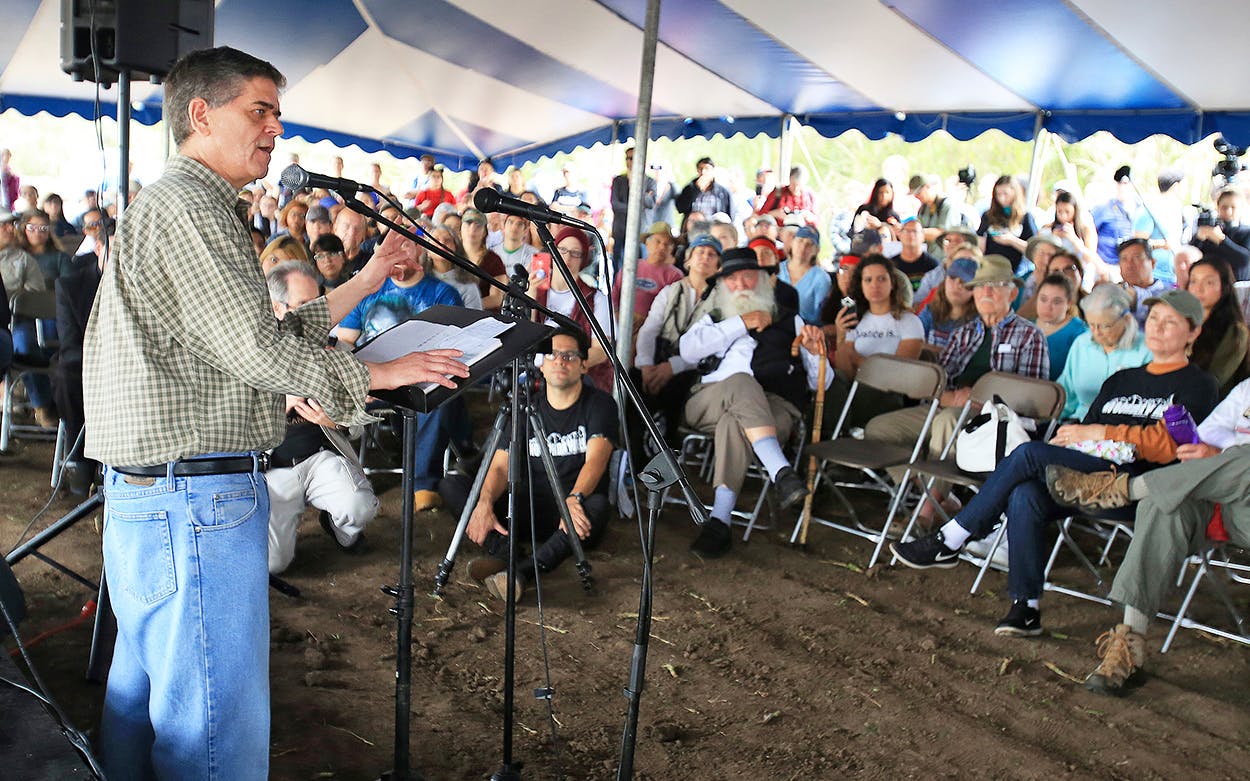The Santa Ana National Wildlife Refuge is a pristine 2,088-acre preserve that hugs the Rio Grande just east of Pharr. More than 160,000 people visit its verdant landscape each year, generating nearly half a billion dollars in annual eco-tourism revenue for the region. They come in hopes of spotting endangered animals, like the ocelot, or some of the more than four hundred species of birds—including rarities like the green jay, great kiskadee, and altamira oriole—that make this corner of South Texas one of the top birding destinations in the country.
Last year, when Congress appropriated $1.3 billion for a border wall, including the addition of 33 miles of steel-bollard fencing through Hidalgo and Starr counties, the measure prohibited that money from being used to build through Santa Ana. But environmentalists and at least one Texas congressman now believe the Trump administration is planning an end-run around that protection.
Maps made public in June by U.S. Customs and Border Protection show that a proposed wall would run for three-tenths of a mile along the eastern border of the Santa Ana refuge. While that placement wouldn’t violate the congressional prohibition, a required 150-foot easement to the south of the wall would extend into the refuge’s boundaries, according to Scott Nicol, cochairman of the Sierra Club Borderlands Campaign. Called an “enforcement zone,” the easement would require the clear-cutting of several acres in order to provide a lighted road along which law enforcement can patrol the border.
Nicol visited the site of the proposed construction and took a video of what he believes is a survey stake about 150 feet from where the proposed wall would sit atop a levee near the edge of Santa Ana property. He expects Trump administration officials will “split hairs,” arguing that no wall construction is planned through the refuge itself and that the congressional prohibition says nothing about the enforcement zone. That could be a setback for a rare environmental victory as it relates to the border wall, a project that has been granted waivers of strict environmental rules in the name of national security.

Democratic congressman Filemón Vela of Brownsville shares the environmentalists’ concerns. The Department of Homeland Security or the Army Corps of Engineers “may be moving in a direction to distort the intent of the exemption,” Vela told me during a recent tour of his district. He plans to confer with activists like Nicol to formulate a strategy for protecting Santa Ana.
Officials with Customs and Border Protection did not immediately respond to questions about Vela’s concerns. The federal agency, which is overseeing construction of the border wall with the U.S. Army Corps of Engineers, released the proposed route maps in late June and has given the public until September 25 to submit comments.
Santa Ana is one of several ecologically sensitive areas of South Texas that environmentalists fear could still be bisected by border barriers, with acres upon acres of their land clear-cut to accommodate construction, despite the wishes of Congress. In February, a budget deal that provided another $1.375 billion in funding for border barriers through the Rio Grande Valley included protections for the National Butterfly Center and Bentsen-Rio Grande Valley State Park. However, President Trump’s February 15 emergency declaration, seeking to use Department of Defense funds to build more border fencing than Congress had authorized, threw into doubt the protections for Bentsen, Santa Ana, and other special places in the Valley. It remains an open question whether the congressional prohibitions apply to the emergency funding. Vela believes they remain in effect, but Congressman Henry Cuellar, D-Laredo, who placed the prohibition language in this year’s funding bill, has said he isn’t sure what effect the president’s declaration may have.
These newest concerns about encroachment on Santa Ana come as the Washington Post on Wednesday reported that Trump is stepping up pressure to build a wall before the 2020 election. “[H]e has directed aides to fast-track billions of dollars’ worth of construction contracts, aggressively seize private land and disregard environmental rules, according to current and former officials involved with the project,” the Post reported. “He also has told worried subordinates that he will pardon them of any potential wrongdoing should they have to break laws to get the barriers built quickly, those officials said.”
- More About:
- Politics & Policy
- Border Wall






